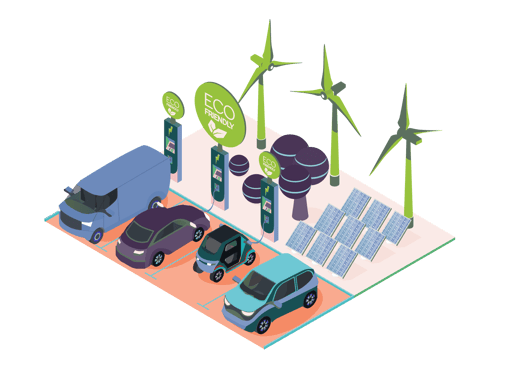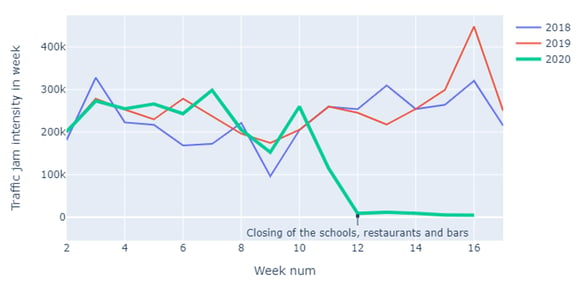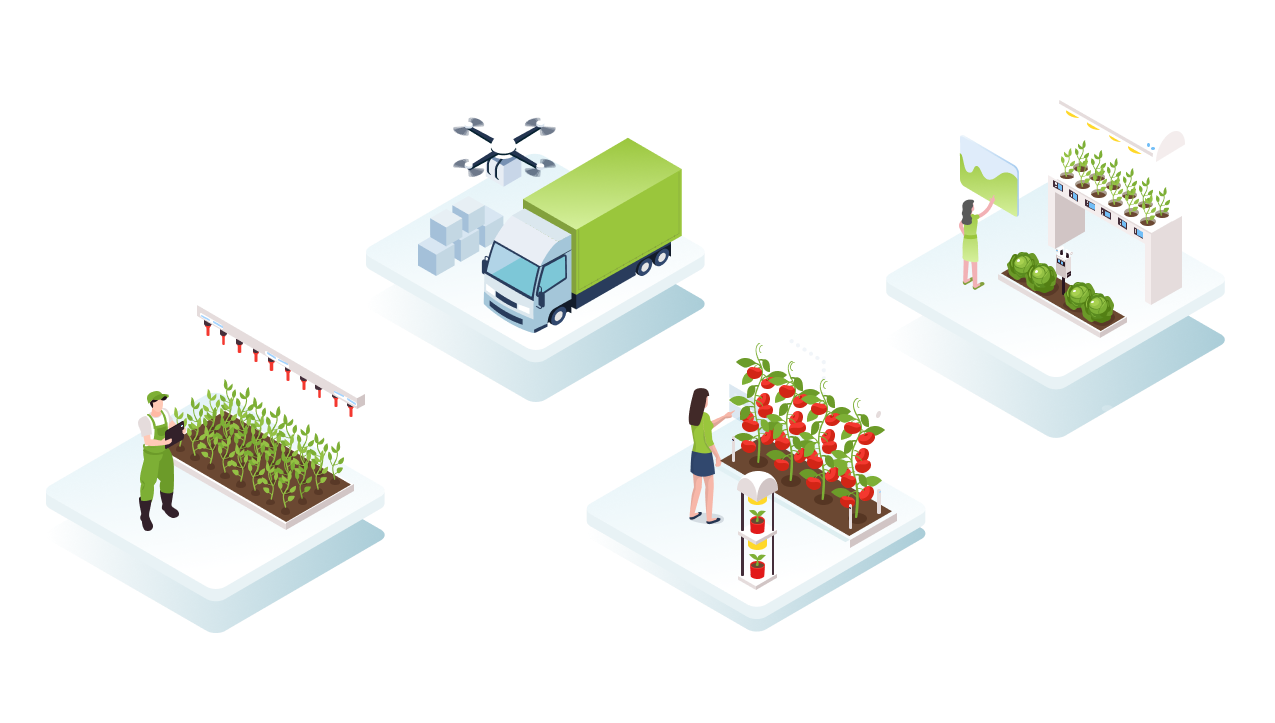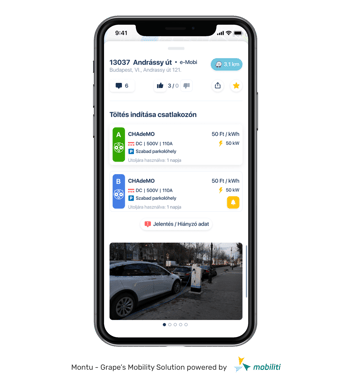Did COVID-19 slow down or speed up Mobility developments?

- MOBILITY
- E-MOBILITY
- ELECTRIC VEHICLES
- APP DEVELOPMENT
When coronavirus appeared in 2020, many industries experienced a rapid drop down in productivity across the globe. Factories had to stop their production for a short period of time and the uncertain environment has created new challenges for different industries. The decrease in traffic forced mobility industry to create new innovative solutions that are financially sustainable during a possible new pandemic wave.
The number of daily flights in March 2020 decreased by 90% (comparing to 2019) and still the aviation industry tries to get back to the 2019 traffic intensity level. Since the pandemic, traffic in many cities decreased by 50% and more and more capitals are converting on-street parking spaces into bike lines. In Hungary, citizens can apply for public funding in purchasing e-bikes; Paris local government announced to spend 300 million euros on improving the cycling infrastructure in the city. These two examples from different parts of Europe show that mobility seeks to find new ways adopting coronavirus implicated challenges.

The first question we need to think about is that: Are we ready for new mobility innovations? The answer is yes. Coronavirus pandemic speed up the developments of new innovations because we had to adjust to a new, more environmentally sustainable world during the COVID-19 crisis. We worked from home, we travelled outside rush hours, we learned what it means to be flexible. COVID-19 has created a demand made mobility, therefore companies need to integrate all the new modes of transportation, such as e-scooters, e-bikes, electric vehicles and hybrid public transportation to create a more flexible environment. Mobility as a Service (MaaS) might be the perfect solution for that.
A big innovation citizens seek for an integrated platform where all e-mobility services are available. Today we experience all kind of apps for different transportation modules, like where to find an e-scooter near me, or where to find an electric charging station around me for my e-vehicle. In order to promote MaaS, local governments need to invest more money in smart city solutions to provide real-time on demand services for their citizens. Mobility as a Service covers all segments from public transport to parking management to enhance the number of urban mobility innovations.
Mobility as a Service relies on Big Data generated from transportation, data and knowledge sharing is key in implementing new mobility innovations. The COVID-19 crisis created new KPIs for researchers to look under the hypothesis if e-mobility is the future. One perfect example for that is the traffic change in the Netherlands. The Dutch Ministry of Infrastructure and Water Management collected data shows the traffic congestions in the Netherlands for the first months of the last three years: Dutch roads have never experienced a rapid decrease in traffic jam intensity in the past few years since the COVID-19 lockdown. This information provides a great basis for new mobility developments in the Netherlands.
 Source: Data.Europa.Eu
Source: Data.Europa.Eu
COVID-19 has shed light on the need for intelligent infrastructure, more sensors and devices must be implemented to provide traffic intensity indicated smart road management. The traffic during the pandemic didn’t expand linear which means we should find new methods in modernizing traffic management. Artificial Intelligence based infrastructure is the future, but autonomous/driverless cars are already making their marks on the road.
Share this post on social media:
Posts by Tag
- IoT (17)
- Smart cities (16)
- E-mobility (14)
- Energy Management (10)
- Mobility (9)
- Software development (9)
- Marketing automation (6)
- RPA (6)
- Robotic Process Automation (6)
- electric vehicles (6)
- Internet of Things (5)
- IoT solution (5)
- Marketing software (5)
- Smart Building (5)
- Business Intelligence (4)
- Custom applications (4)
- IoT platform (4)
- Uipath (4)
- electric charging (4)
- IoT devices (3)
- Properties (3)
- AI (2)
- BI (2)
- Montu (2)
- Multi-device functionality (2)
- Omnichannel (2)
- RPA Budapest (2)
- Smart city (2)
- UX design (2)
- app development (2)
- artificial intelligence (2)
- crm (2)
- crm software (2)
- electric charging station (2)
- machine learning (2)
- marketing campaign (2)
- optima (2)
- API Testing (1)
- Agriculture (1)
- Automated Testing (1)
- BYOD (1)
- EV (1)
- Energy Communities (1)
- Event insights (1)
- Event report (1)
- Green IoT (1)
- HR (1)
- IT Outsourcing (1)
- ML (1)
- Power BI (1)
- Resource Management (1)
- Smart Home (1)
- Smart Office (1)
- TaaS (1)
- UX/UI Design (1)
- Xamarin (1)
- cloud (1)
- cloud computing (1)
- cross-selling (1)
- data driven marketing (1)
- digital twin (1)
- dynamic customer segmentation (1)
- esg (1)
- inbound marketing (1)
- industry 4.0 (1)
- onprem (1)
- onpremise (1)
- scalability (1)
- software robot (1)
- testing as a service (1)
- upselling (1)
Recent Posts
Read On

- UX/UI DESIGN
Top 5 UX/UI Design trends to look forward in 2022
Designers have been working from home since the beginning of the pandemic, which has undoubtedly created a favourable effect on design outcomes. The new wave of virtual reality has created an environment for UX/UI designers that enables them to spend more time on research and pay better attention...

- SOFTWARE DEVELOPMENT
- MOBILITY
- E-MOBILITY
- SMART CITIES
5 reasons to choose a white-label electric vehicle charging solution
Most ideas start with common sense: we would like to solve a given problem of our future customers; accordingly, we would like to provide a solution as soon as possible. In most cases, we wish to create a product sooner than the development phase would be optimal, resulting in quality decreases. It...

- IOT
- ENERGY MANAGEMENT
- AGRICULTURE
Smart Farm: a digital model for IoT-powered agriculture
In the vast expanse of modern agriculture, a quiet revolution is underway, promising to reshape how farmers grow, manage, and harvest our crops. This transformation leads to smart farming with the power of the Internet of Things (IoT), which holds the potential to propel agriculture into a new era...





